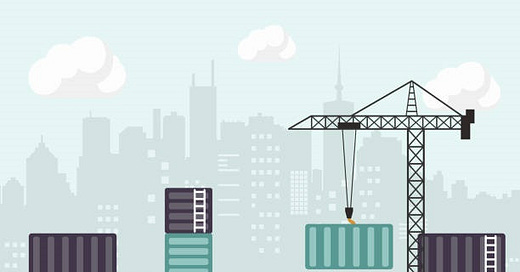You’re reading Flow of Funds, a Substack newsletter that seeks to dig deeper into the intersection of global supply chains and the businesses that surround them. Please go ahead and subscribe—it’s free!—to get these periodic updates sent directly to your inbox. I wouldn’t send you anything that I would not want to read myself!
The standardized metal shipping containers that deliver us the goods that we take for granted are, quite simply, not often located where they need to be. Trade imbalances, storage issues, and inefficient planning are some evergreen industry problems that have been exacerbated by upended demand patterns caused by the ongoing COVID-19 pandemic. Container pileups are becoming less of a New Jersey Turnpike peculiarity and more of a systemic problem as over $20 billion is spent annually moving empty boxes between ports—money that could be spent moving actual goods or returned to customers in the form of lower prices. Though the underlying causes of this imbalance are not going to fix themselves any time soon, innovators in the container design and transportation technology spaces are finding ways to bridge this gap.

Why Are Standardized Shipping Containers Different?
Intermodal freight transportation is hardly new. Carriers have been moving freight and its containers in various ways for centuries, and today’s metal boxes are logical descendants of the shipborne bags and barrels that longshoremen loaded and unloaded by hand for centuries prior. An early shipping container as we might recognize it today came about in the late 18th century when British engineer James Brindley created purpose-built wooden boxes that could be easily lifted off of horse-drawn wagons and onto a canal barge to be sent to market (the barge itself is pictured below, though its “containers” are apparently missing). Other similar-but-still-bespoke concepts were developed over the years with varying degrees of success.
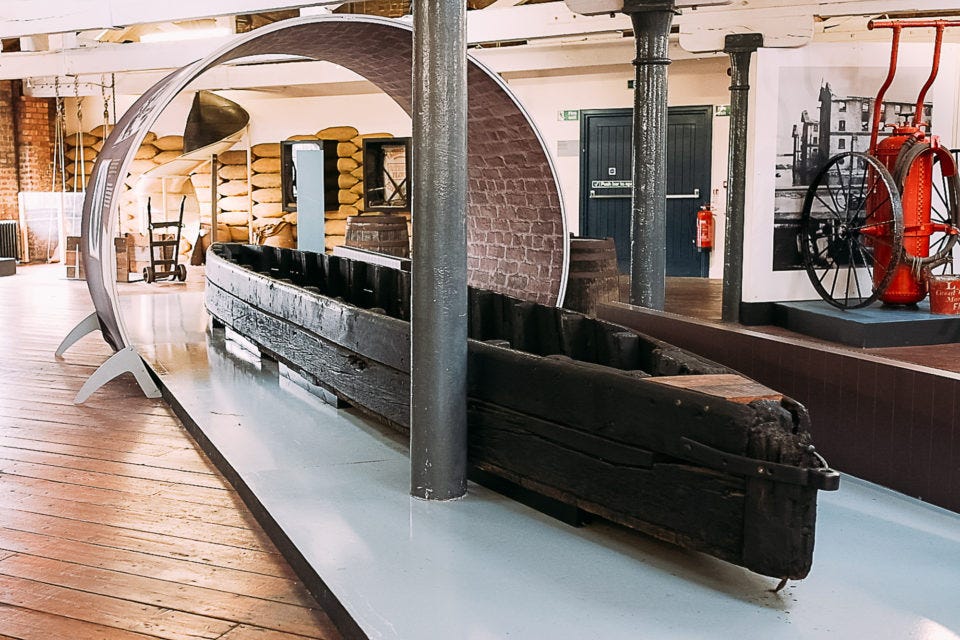
When Malcom McLean arrived on the scene in the 1950s, shippers and carriers were used to the time and expense involved in moving freight around the world.1 There was apparently no first-mover advantage to standardizing the process until then, when the post-World War II economic boom created a shipping environment competitive enough to benefit from faster and more seamless cargo movements.2 McLean’s Sea-Land Service, Inc. (now part of Maersk) did just that, and his standardized metal “trailer vans” eventually evolved into the ubiquitous standard shipping containers that we know today.
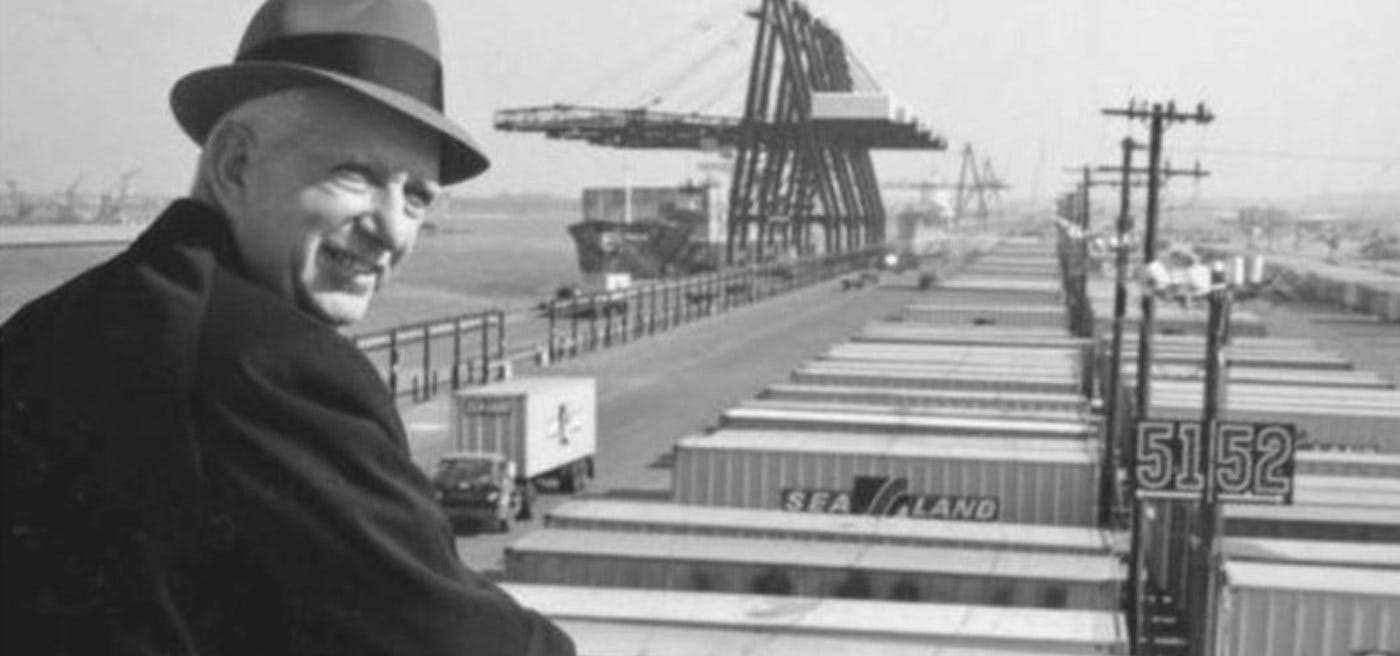
The standardized metal shipping container offers many benefits. It is large and internally spacious, watertight and corrosion resistant. Above all else, though, it is shaped just like every other ISO 668-compliant container in the world: 8 feet wide, 8 to 9.5 feet tall, and 20 or 40 feet in length (with some exceptions). This standardization in dimensions, however simple, has allowed for more freight to be moved more efficiently than ever before. Containers on modern ships can be stacked up to twenty units high (designs vary but I’m eyeballing the Ever Ace’s above- and below-deck capacities here) and ship-to-shore gantry cranes can load or unload between 30 and 50 containers per hour. Loading efforts that used to be days-long, highly manual efforts now take longshoremen just hours—and more automation is on the way.
How Did We Get Here?
An optimal containerized shipping network would involve completely full containers in constant movement. This is, of course, not possible in real life. Trade imbalances exist (though some countries come close to balanced when current account balances are measured as a percentage of GDP), and even a hypothetically balanced scenario would see differences in freight types (say, importing of containerized consumer goods at the expense of tankerized oil exports). Timing differences would persist, as would the added complexity of intermodal transport itself as containers are moved from ship to truck or rail for hinterland transport. Containerized freight is, after all, not instantaneously loaded or unloaded alongside the ship.
The answer to these challenges has been simple: lots and lots of containers. Hard numbers are impossible to compile, but one provider of the boxes estimates that about 17 million of them exist worldwide. 11 million of those (their count was likely pre-pandemic) sit unused at any given time, presumably able to enter the market when economic conditions permit. Some may be rotting in storage yards and others may have been converted into millennial tiny homes, but their durable and long-lasting nature (10 to 12 years from estimates by the same provider) should mean that many of those “spares” may reenter service in times of market tightening.
This has been the system for decades. Full containers move around the world in the directions of unbalanced trade flows and many of them pile up, unneeded, at the ends of their voyages until it is worth the while to ship them elsewhere. Recycling is possible, though it is expensive to do so locally (the goods they carried were likely manufactured elsewhere for the same reason!) and the steel is of relatively low quality. Aluminum beverage can scavenging this is not.
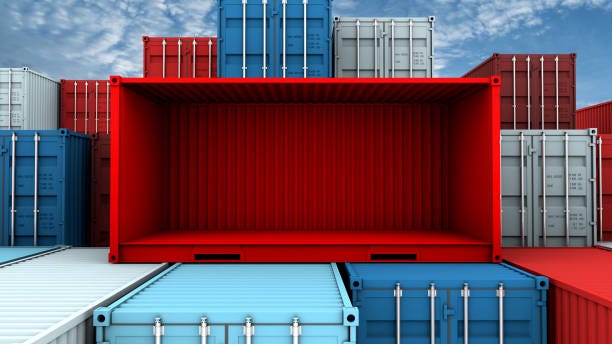
The most economical option for unneeded containers is, in the short term, to do nothing. In the long term, however, this situation leads to waste and clutter around “net destination” ports and an unnecessary use of new, pollutive resources around “net origination” ports. Society as a whole bears a net loss as goods become more expensive due to the higher costs involved in reactively procuring one-off shipping containers from who-knows-where instead of having them made available proactively in a more organized and streamlined fashion. Recent increased awareness of this container positioning problem, combined with pandemic-era market tightening, is prompting some industry participants to get involved.
Construction-based Solutions
One way that we can solve the container positioning problem is by making it easier to move empty boxes to where they will be needed next. The obvious answer here lies in construction: being able to break down a six-walled standard container in the same way we break down cardboard boxes from our internet retailer of choice for storage or disposal. Several forms of this type of container have been proposed, which are currently in varying stages of commercial maturity.
New Jersey-based manufacturer Staxxon has proposed one type of vertically folding, accordion-style container that collapses into a space one fifth of the volume of a standard container. Five containers come in, they are unloaded, and then they are collapsed into a single bundle which is itself the same dimensions as a regular standardized container. The bundled containers may then be stored or shipped in bulk to the next place where they are needed. Space needs and relocation costs are reduced by four fifths.
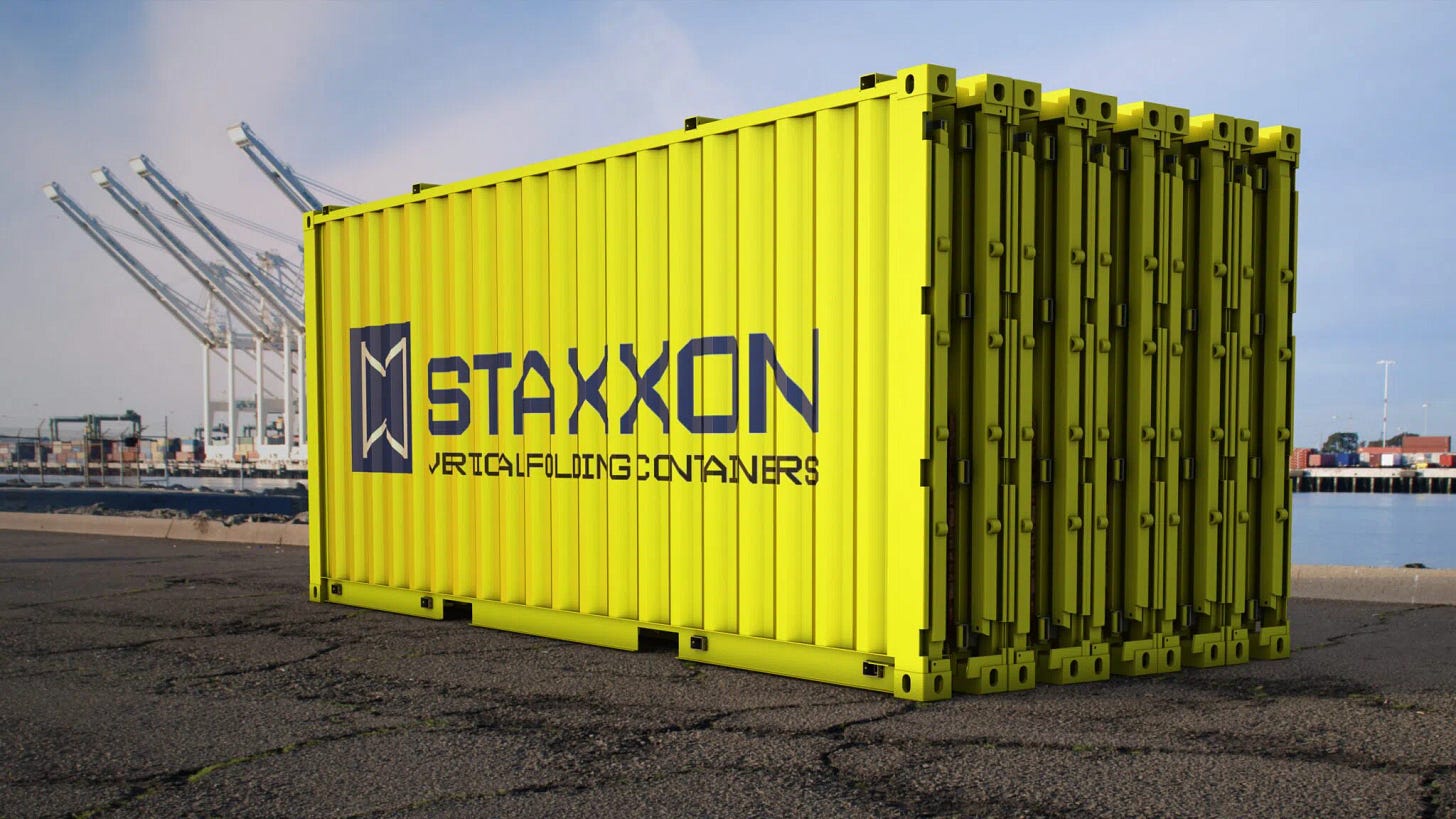
The horizontally folding design minimizes the risk of collapse due to internal joint failure (other prototypes collapse vertically, later) and, per Staxxon, a specialized crane system is in the works with Finnish crane maker Konecranes that will quickly break down and nest the containers—the container pictured above is actually a bundle of five Staxxon containers in their collapsed state. They need not be bundled in multiples of five, either. The design allows for collapsing and bundling of any number of containers from two to five.
The specialized cranes/racks will cost money (though a slower, forklift-only process exists), and their internal joints and hinges may be susceptible to corrosion and possible failure through exposure to salt water and movements on the high seas. Tare weights (the weights of the containers themselves) are also expected to be 20 to 30 percent higher than those of regular containers, adding to the weight and expense.
Staxxon’s design, along with those of its competitors (for example GenFlat and 4Fold, two manufacturers offering similar, vertically-folding prototypes) will operate most efficiently at scale. Folding equipment is costly and the process is time-consuming, and spare parts will have to be kept on hand to replace faulty hinges and panels, which will themselves face higher risk of corrosion and damage on the high, salty seas. A closed-loop system, where the same company is on the sending and receiving end of the containers, may help keep expertise in-house and most fully capture these proposed efficiencies.
Whether these designs will be realized remains to be seen (Staxxon’s design has been under development since at least 2011), but the pandemic’s renewed focus on container imbalances may have renewed interest in the issue and shippers and carriers alike are looking for new ideas.
Information-based Solutions
Collapsible container technology can only go so far in solving the container positioning problem. Barring some complete revamp of global trade policy that perfectly balances the flow of full containers into and out of port, there will always be some need to move empty containers, collapsed or not, between points of availability and need. Until then, information-based marketplaces can aid in connecting havers and needers of the boxes.
xChange may be the best-known provider of such services. Originally founded as Container xChange by the Boston Consulting Group in 2016, it seeks to connect users of containers the same way eBay connects antiques enthusiasts and Uber connects drivers and riders. Boxhub and Boxxport operate similarly and Facebook, oddly enough, might find use as a marketplace of last resort.

Like those other marketplaces, these firms recognize that shipping containers vary widely in technical specifications and physical condition in spite of their “standardization”. A container seeker on xChange might need a box that is 20 feet or 40 feet in length, standard height or a high cube, reefer (for “refrigerated”, of course), flat rack, open top, a tank, the list goes on. A brand new, weathertight container might be required for a given cargo, or a cheap beater may do the job. The economics of the container decision are as varied as those of the shipping decision itself, and after some observation the market quickly appears more similar to a used car dealership than any sort of fungible securities exchange. But it is certainly a start.
Patchwork Solutions to a Patchwork Problem
Part of the beauty of the global shipping complex is the fact that it is of no single design. No one person or group of people has ever sat down to compile specific container dimensions, ship sizes, canal widths, or channel depths and build a single framework for worldwide ocean transportation. McLean’s container design, however revolutionary, was still in reaction to broader market forces, and global standards-setting bodies such as the International Organization for Standardization (ISO) and the United Nations Conference on Trade and Development (UNCTAD) play catch-up by necessity.

The container positioning problem is a natural end result of the countless market forces that have shaped the broader world economy. It’s a good problem to have: it means that the system is working. So long as the externalities can be managed (pollution and waste on either end of the container value chain) and empty container transport costs can be minimized (either by physical design or information sharing, above), we should welcome this market-based approach to filling in the blanks created by others. Centuries of innovation in transportation have brought us this far, and a few rusty containers hanging out in New Jersey should not hold us back from more.
Industry parlance describes the owners of cargoes as “shippers” and the transporters of them as “carriers”.
Fans of Daron Acemoglu and James Robinson’s Why Nations Fail might draw a comparison between those authors’ “critical junctures” theory and McLean’s—lets be honest—partial luck in creating the right technology at the right time. Acemoglu and Robinson cite, for example, the 14th century Black Death and subsequent attempts at wage-fixing by the British government to control labor prices in the wake of that bubonic plague’s worker shortages. Mass disease and price fixing had both occurred before, but the combination of both at that particular critical juncture of history is credited for the fall of feudalism in England and Western Europe’s subsequent economic dominance. For McLean, standardized shipping containers had existed in some form for decades and economic cycles were nothing new. Introducing his form of standardized container at the right time, though, was his critical juncture which redefined the global shipping industry and by extension the global economy.

